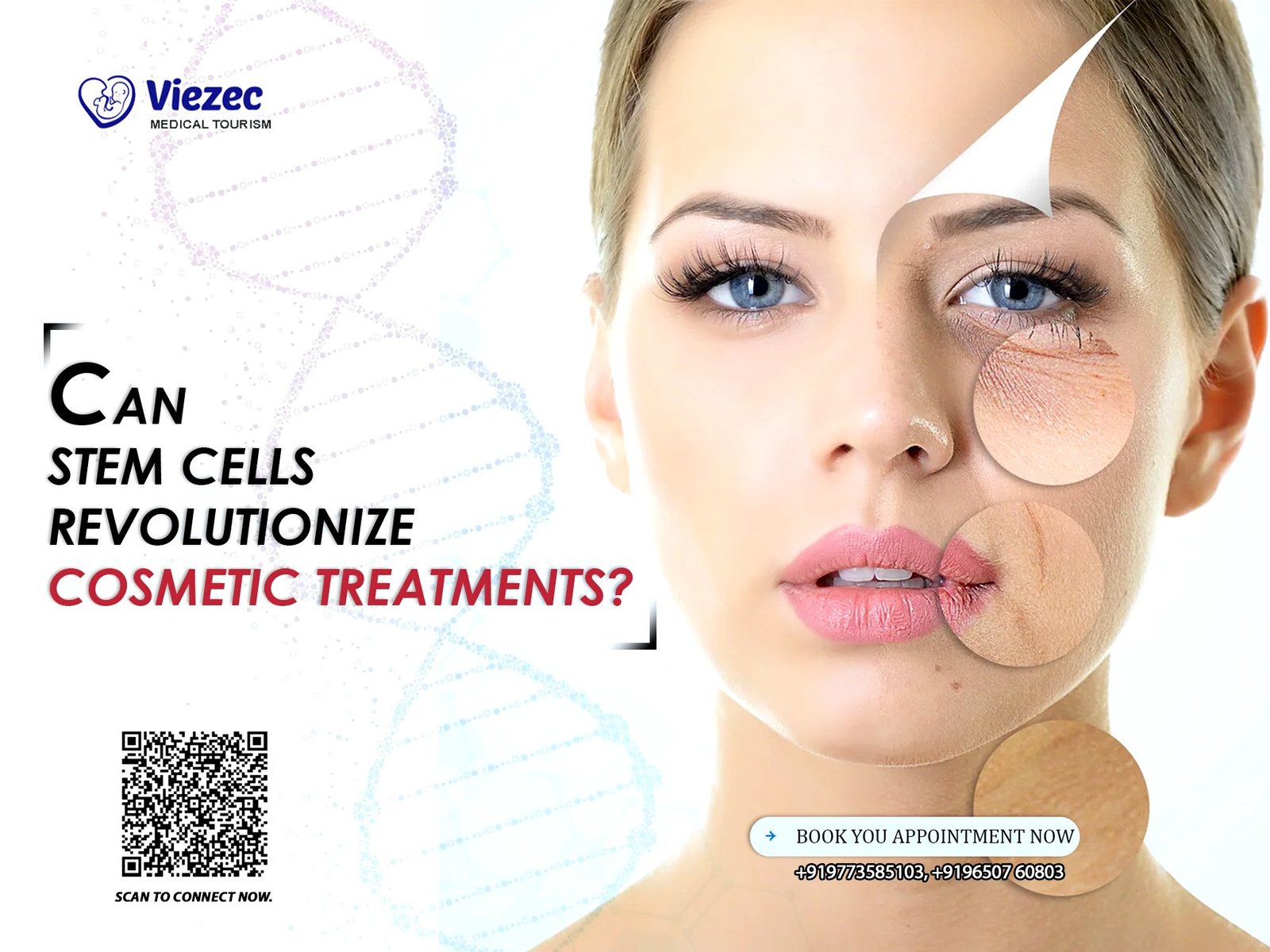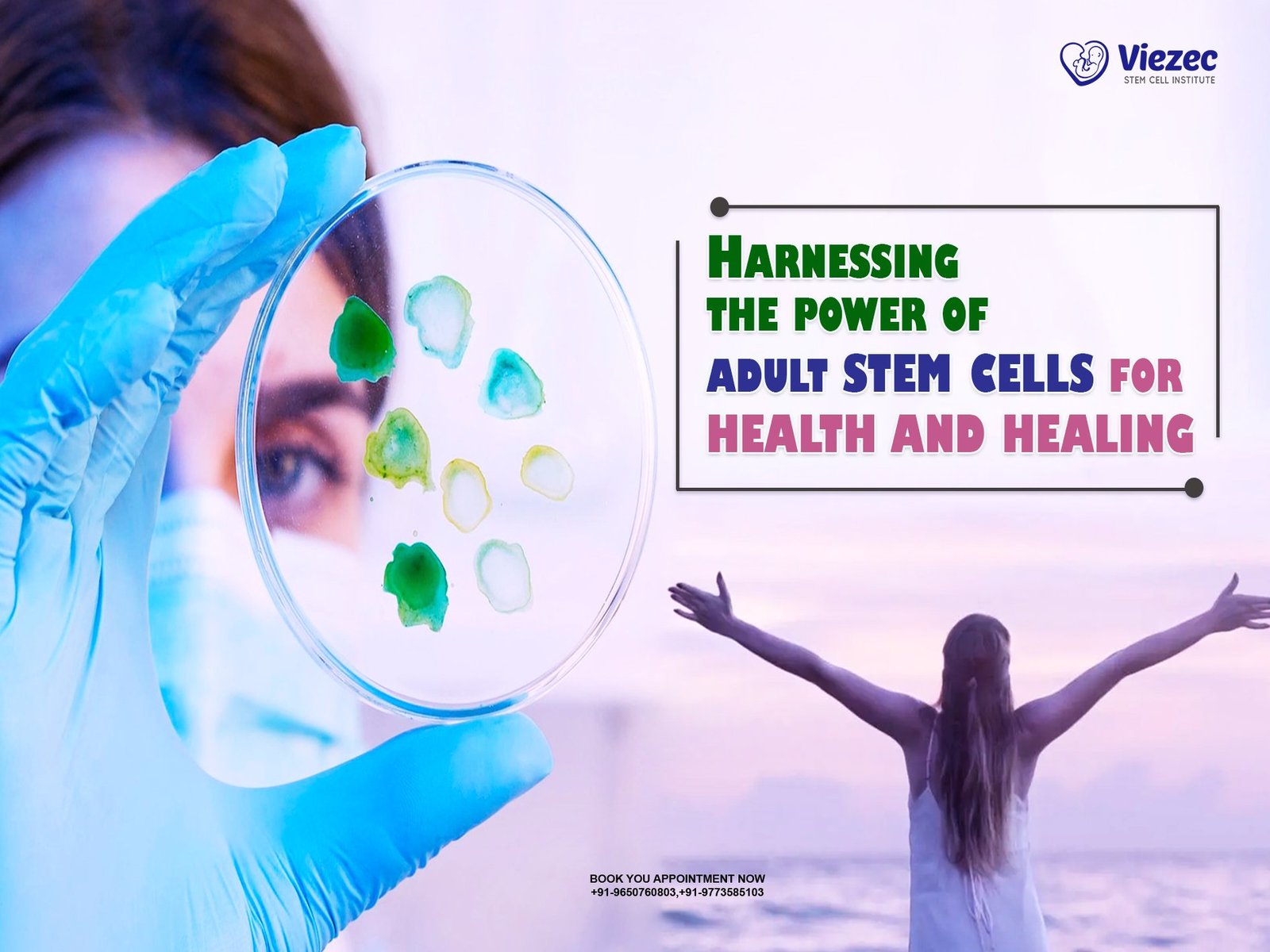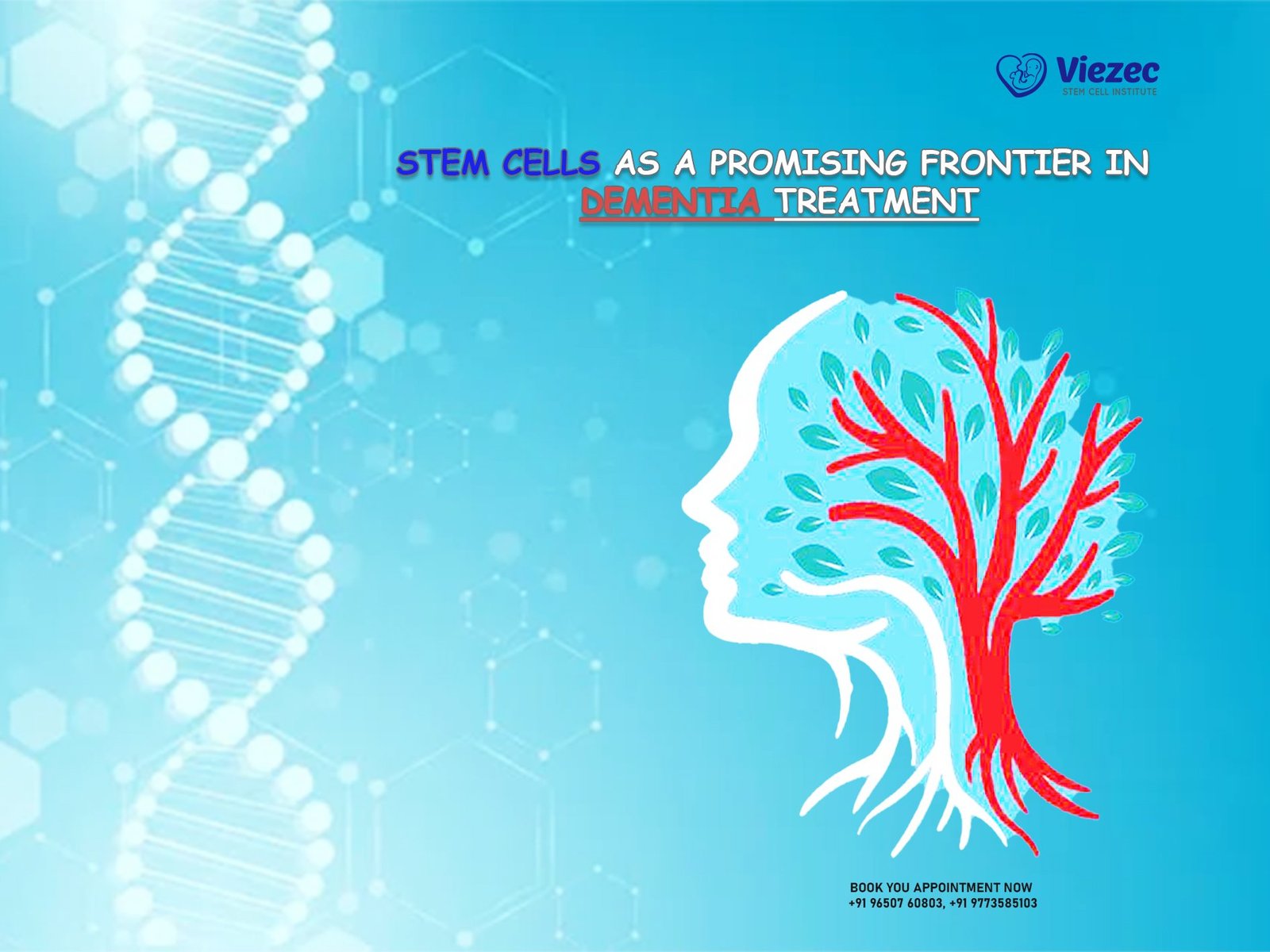Discover how stem cell therapy is transforming modern medicine by offering a minimally invasive alternative to surgery. This blog explores the science behind stem cells, their regenerative potential, and real-world success stories. Learn which conditions respond best, how treatments work, and why more patients are choosing healing over cutting. Plus, explore trusted options like Viezec in India.
Understanding Stem Cell Therapy
What Are Stem Cells?
Stem cells are the body’s master cells—the foundation from which all specialized cells are made. Unlike other cells, stem cells have the unique ability to transform into a variety of cell types, such as muscle, nerve, or blood cells. This incredible versatility allows them to play a central role in healing and regeneration, offering hope for conditions that once relied solely on surgery or long-term medication.
Differentiation and Self-Renewal Explained
What makes stem cells truly powerful are two core traits: differentiation and self-renewal.
-
Differentiation means a stem cell can evolve into another specific type of cell when needed—like a cartilage cell for a damaged joint or a heart muscle cell after a heart attack.
-
Self-renewal allows them to reproduce over time, creating a steady supply of new stem cells.
These capabilities are why stem cells are at the heart of regenerative medicine—they don’t just patch up the damage; they help rebuild what’s broken.
Types of Stem Cells Used in Modern Medicine
Stem cell therapy today harnesses specific types of stem cells known for their safety, accessibility, and healing potential. Two of the most commonly used are mesenchymal stem cells (MSCs) and induced pluripotent stem cells (iPSCs).
Mesenchymal Stem Cells (MSCs)
MSCs are adult stem cells commonly found in bone marrow, adipose (fat) tissue, and umbilical cord tissue. They can develop into bone, cartilage, and fat cells, making them ideal for treating musculoskeletal issues like arthritis or tendon injuries.
They also have powerful anti-inflammatory and immunomodulatory effects, helping the body manage inflammation and heal more effectively—without the invasiveness of surgery.
Induced Pluripotent Stem Cells (iPSCs)
iPSCs are a remarkable scientific breakthrough. They’re created by reprogramming adult cells—like skin or blood cells—to return to a stem cell-like state. Once reverted, they behave much like embryonic stem cells, capable of turning into virtually any cell type in the body.
What makes iPSCs especially promising is their ethical advantage: they offer similar regenerative potential to embryonic cells but without the associated controversies.
Why Avoid Surgery?
While surgery has long been the gold standard for treating serious injuries and chronic conditions, it’s not without drawbacks. Stem cell therapy offers a compelling, less invasive alternative that sidesteps many of the complications associated with traditional surgical interventions.
Risks Associated with Invasive Procedures
Even with today’s medical advances, surgery carries significant risks—especially for older adults or those with underlying health conditions.
Infection, Scarring, and Blood Loss
Infections at the surgical site, unintended bleeding, and noticeable scarring are still common complications. According to data from the CDC and various surgical registries, surgical site infections occur in up to 5% of patients, depending on the procedure. In some cases, these complications lead to hospital readmissions, extended recovery time, or even revision surgeries.
Prolonged Recovery and Rehabilitation
Recovering from surgery is often a marathon, not a sprint. Post-operative healing may involve weeks to months of limited movement, physical therapy, pain management, and lifestyle adjustments. For working adults, athletes, or caregivers, this downtime can seriously disrupt life and delay a return to normal activities.
Emotional and Financial Strain on Patients
The decision to undergo surgery isn’t just physical—it’s emotional and financial too. The fear of anesthesia, complications, or post-surgical pain can create anxiety leading up to the procedure. Then there’s the financial aspect: surgeries often include costs for the operating room, anesthesia, hospitalization, medications, follow-up care, and rehabilitation. Even with insurance, out-of-pocket expenses can be substantial.
How Stem Cell Therapy Minimizes the Need for Surgery
Stem cell therapy isn’t just a futuristic concept—it’s a practical and increasingly accessible option that’s already helping thousands of people avoid surgery. By working with the body’s natural healing systems, stem cells can repair tissue damage from within, often eliminating the need for incisions, stitches, or long recoveries.
Promoting Natural Healing and Regeneration
Stem cells act like the body’s internal repair crew. When injected into a damaged area—such as a worn-out knee or inflamed tendon—they stimulate the body’s own healing mechanisms. They don’t mask symptoms like painkillers; instead, they help regenerate healthy, functional tissue where it’s needed most.
Mesenchymal stem cells can reduce inflammation, accelerate tissue repair, and even promote the regrowth of cartilage and connective tissue—all without cutting into the body.
Targeting the Root Cause of Degeneration
Unlike surgery, which often focuses on removing or replacing damaged tissue, stem cell therapy targets the underlying cause of the problem. Whether it’s degeneration due to aging, injury, or chronic inflammation, stem cells work at the cellular level to correct imbalances, restore function, and prevent further deterioration.
This makes regenerative medicine particularly valuable for chronic conditions like osteoarthritis or degenerative disc disease, where traditional treatments may only provide temporary relief.
Supporting Tissue Repair Without Incisions
Stem cell procedures are typically done through image-guided injections—no scalpels, no stitches. This non-invasive approach drastically reduces the risk of infection, minimizes post-procedure discomfort, and speeds up recovery.
Most patients can walk out of the clinic the same day and return to normal activity within a few days—compared to the weeks or months often required after surgery.
Common Conditions Managed Without Surgery
Stem cell therapy is transforming how we treat a wide range of injuries and chronic conditions. From worn-out joints to heart damage, these treatments offer a path to healing without the trauma of surgery. Here’s a look at some of the most common conditions where stem cell therapy is making a real difference.
Orthopedic Applications
Orthopedic conditions—especially those involving joints, tendons, and cartilage—are among the most widely treated with stem cell therapy. These therapies aim to reduce pain, improve mobility, and help the body regenerate damaged tissue.
Knee Osteoarthritis
Knee osteoarthritis affects millions of adults, often leading to pain, stiffness, and limited mobility. While knee replacement surgery has long been a standard treatment, stem cell injections offer a less invasive solution.
Recent studies show that mesenchymal stem cells (MSCs) can help reduce inflammation, slow cartilage loss, and in some cases, even regenerate damaged cartilage. Many patients report improved function and reduced pain within weeks of treatment—with no need for surgery or hospitalization.
Rotator Cuff Injuries
Rotator cuff tears and chronic inflammation in the shoulder are common among athletes and older adults. Traditionally treated with arthroscopic or open surgery, many of these cases can now be managed with targeted stem cell injections.
These injections promote tendon repair, reduce inflammation, and support natural tissue healing—often allowing patients to avoid long rehab times associated with surgical repair.
Spine and Back Conditions
Back pain is one of the most common reasons people seek medical care—and it’s also one of the most complex to treat. Conditions like degenerative disc disease, herniated discs, and facet joint syndrome are being successfully managed with stem cell therapy.
Injections of MSCs into damaged spinal discs have been shown to reduce inflammation, regenerate disc material, and improve spinal stability—helping many patients avoid spinal fusion or discectomy surgeries.
Non-Surgical Treatments for Cardiac Damage
Heart tissue damaged by a heart attack or chronic disease has limited capacity to regenerate on its own. Stem cell therapy offers new hope. Clinical trials are exploring how stem cells can help rebuild heart muscle, promote blood vessel growth, and improve heart function—all without the need for invasive bypass or valve surgery.
While still emerging, regenerative cardiac therapies are showing promise for conditions like ischemic heart disease and cardiomyopathy, offering patients new options for managing heart health without going under the knife.
Comparing Outcomes: Surgery vs. Stem Cell Therapy
Choosing between surgery and stem cell therapy isn’t always straightforward—but for many people, the outcomes make the decision clearer. Let’s take a closer look at how the two options stack up when it comes to recovery, pain, complications, and long-term costs.
Recovery Timeframes
One of the biggest advantages of stem cell therapy is the dramatically shorter recovery time.
-
Surgical recovery can take anywhere from 6 weeks to 6 months, depending on the procedure. Joint replacements, spinal surgeries, and cardiac operations often require extended rest, physical therapy, and time away from work or daily life.
-
Stem cell therapy, on the other hand, is typically done as an outpatient procedure, with most people resuming light activity within a few days. Full benefits may take a few weeks to appear as the body begins to heal, but patients rarely need extended downtime.
Pain and Complication Rates
Surgery, by its very nature, involves trauma to the body. Incisions, sutures, anesthesia, and tissue disruption often result in significant post-operative pain and a measurable risk of complications like infection, blood clots, or nerve damage.
Stem cell procedures are minimally invasive, usually involving a single injection with little to no pain. The risk of complications is extremely low—especially when the treatment is administered by experienced professionals under proper sterile conditions.
Clinical studies consistently report fewer adverse effects from stem cell therapy compared to surgical interventions, particularly in orthopedic and spinal care.
Cost-Effectiveness Over the Long Term
The cost of surgery can be staggering. Even with insurance, patients often face:
-
Hospital and surgeon fees
-
Anesthesia costs
-
Post-op rehabilitation
-
Medications and follow-up visits
While stem cell therapy may not always be covered by insurance, many patients find it more cost-effective over time. Fewer follow-up appointments, no hospital stays, and quicker return to work or activity can translate into lower total expenses.
Plus, stem cell therapy may reduce the need for future surgeries by actually helping to repair the damage, not just replace the symptom.
Who is a Good Candidate for Stem Cell Therapy?
Stem cell therapy isn’t a one-size-fits-all solution—but for the right individuals, it can offer a life-changing alternative to surgery. The key lies in personalized assessment and identifying those conditions where regenerative healing is most likely to succeed.
Pre-Treatment Assessment
Before starting any stem cell procedure, patients undergo a thorough medical evaluation. This typically includes:
-
A detailed health history
-
Imaging studies like MRI or X-rays
-
Physical examination
-
Discussion of current symptoms and treatment goals
The goal is to determine whether stem cell therapy is clinically appropriate and whether it has a strong likelihood of success.
Doctors also evaluate the severity of the condition. For example, a patient with mild-to-moderate knee osteoarthritis may benefit greatly from stem cell therapy, while someone with bone-on-bone joint deterioration may still require surgical intervention.
Conditions Most Likely to Respond
Regenerative medicine shows the most promise in treating degenerative, inflammatory, or soft-tissue injuries in their early to moderate stages. Commonly responsive conditions include:
-
Knee, hip, or shoulder osteoarthritis
-
Rotator cuff tears
-
Meniscus or labral injuries
-
Degenerative disc disease
-
Tendinitis or ligament sprains
For cardiac or neurological applications, patient selection is even more critical, often requiring participation in clinical trials or treatment at specialized centers.
Early vs. Late-Stage Disease Considerations
Timing matters. Patients with early-stage degeneration generally respond better to stem cell therapy. In these cases, the body still has enough viable tissue for the cells to interact with and repair.
In contrast, late-stage disease, where tissue is severely damaged or completely worn away, may limit the effectiveness of regenerative therapy. In such cases, stem cells might provide some symptom relief but are less likely to reverse the underlying condition entirely.
What to Expect During a Stem Cell Procedure
One of the key benefits of stem cell therapy is how straightforward and low-stress the process can be—especially compared to surgery. While advanced technology is involved behind the scenes, the experience for patients is typically quick, minimally invasive, and outpatient-based.
The Process Step-by-Step
Stem cell therapy typically involves three main stages: harvesting, processing, and injection. The entire procedure usually takes just a few hours.
Harvesting, Processing, and Injection
-
Harvesting:
Stem cells are collected from the patient’s own body (autologous) or occasionally from donor sources. The most common sources include:-
Adipose (fat) tissue – usually extracted from the abdomen or thigh via a mini-liposuction procedure.
-
Bone marrow – typically drawn from the pelvic bone using a local anesthetic.
-
-
Processing:
Once collected, the sample is processed in a specialized lab—either in-house or at an affiliated facility. The stem cells are concentrated and purified, ensuring a high-quality, potent injection. -
Injection:
The processed stem cells are then injected into the damaged area—such as a knee joint, spinal disc, or tendon—using image-guided technology (ultrasound or fluoroscopy) for maximum accuracy. Most patients report only mild discomfort during or after the injection.
Post-Treatment Recovery and Monitoring
Recovery from stem cell therapy is typically quick and manageable.
-
Patients can often walk out of the clinic the same day and resume light activity within 24 to 72 hours.
-
Mild soreness or swelling at the injection site is common but temporary.
-
Strenuous activity, such as high-impact exercise or heavy lifting, may be restricted for a few weeks to allow the cells to work and the tissue to respond.
Follow-up appointments are scheduled to monitor progress and determine the full extent of healing. In many cases, improvements in pain and mobility are noticeable within 4 to 12 weeks, with continued gains over the next few months.
Stem Cell Treatment in India : A Trusted Path to Healing
India has emerged as a global destination for advanced, affordable stem cell therapy—offering world-class treatment options at a fraction of the cost found in many Western countries. With highly trained specialists, internationally accredited hospitals, and cutting-edge labs, India is at the forefront of regenerative medicine.
One name that stands out in this growing field is Viezec—a trusted healthcare facilitator known for connecting patients with some of the most reputable stem cell centers in India. Whether you’re dealing with orthopedic issues, neurological conditions, or chronic illnesses, Viezec provides access to customized, ethical, and science-backed stem cell therapies.
Why Patients Choose India:
-
Global-standard care at affordable pricing
-
Comprehensive patient support, from consultation to post-treatment follow-up
-
Personalized treatment plans designed in collaboration with top medical teams
-
Focus on FDA and GMP-compliant procedures using approved stem cell sources
-
End-to-end coordination, including travel and accommodation for international patients
Viezec combines cutting-edge technology with compassionate care, guiding each patient on a healing journey grounded in science, integrity, and hope.
As the future of regenerative medicine continues to unfold, Viezec is helping patients worldwide embrace non-surgical, restorative solutions—turning possibilities into progress.









